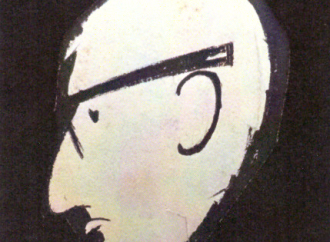by Teodor Lucian Moga
In the past weeks, Romanians have staged the largest mass protests since the country’s break from Communist rule in 1989. On Sunday, February 27, several thousand protesters gathered in front of the government building in Bucharest’s Victory Square — the usual rendezvous since demonstrations began on January 31 — forming a European Union (EU) flag to message support for pan-European values. These values have been under considerable strain since the Romanian government passed emergency ordinance #13 last month that would have softened, among other things, penalties for wrongdoing and corruption by officials.
On January 31, then-Minister of Justice Florin Iordache announced that the government had adopted an emergency decree intended to amend the penal code. The moment chosen for passing the bill was at least bizarre; the decision took place in secret without Parliament’s input and was announced late at night. One of the arguments for such speedy passage was prison overcrowding and the urgent need to align some of the penal laws with the constitution. However, this explanation did not seem sufficiently justifiable, since among the offences that would have been pardoned was corruption for damages below 200,000 RON (roughly 48,000 USD). Several politicians prosecuted for corruption, including the leader of the main governmental party, Liviu Dragnea, would have benefited directly from the bill. Mr. Dragnea is under investigation for abuse of power and could not become premier of Romania due to a previous 2-year suspended jail sentence for electoral fraud.
The move came as a shock for many Romanians and sparked the biggest demonstrations in the country in decades. Since January 31, mass rallies have continued on a daily basis, reaching a peak on February 5 when almost one million people assembled across the country (with 500,000 in Bucharest alone). The centre-left Social Democratic Party (SDP), which saw its parliamentary majority cemented in the December 2016 elections, initially ignored the calls of protesters. However, under constant pressure, the government eventually repealed the contested executive order on Sunday, February 5.
The move did not sufficiently ease the anger of the crowds, however, which continued to call for the government to step down. Furthermore, despite Justice Minister Iordache’s resignation, the following days witnessed a constant influx of people into the squares of the country’s biggest cities to protest this alarming step back in Romania’s fight against corruption. According to protesters, the government led by Prime Minister Sorin Grindeanu had lost credibility, since retreating from the fight against corruption would have plunged the country backwards into the “gray years” before their membership in the EU in 2007.
Romania has struggled to uproot corruption since early 1990s, a legacy of the communist regime under Nicolae Ceaușescu’s iron fist. The young Romanian democracy experienced a chaotic advent to capitalism during the 1990s with the former Communist elite capturing all state levers. An oligarchic clique held a strong grip on power, which prevented the country’s modernization. The application for EU membership, received in 1999, coupled with strong ties to NATO, marked an increasing need to comply with Western values.
Among the European Commission’s requirements was the establishment of an anti-corruption directorate (DNA) whose main aim was to set up efficient mechanisms to fight corruption. DNA materialized in 2002; however, its first results were rather modest. Even after its EU accession in 2007, Romania is one of the most corruption-riddled countries in Europe. The European Commission placed Romania (together with Bulgaria) under the Cooperation and Verification Mechanism, a framework specifically designed to monitor and assist the two countries in their judicial reform and anti-corruption crusade. The DNA finally became effective, particularly in the last few years. According to the directorate’s reports, between 2014 and 2016, roughly 2000 officials were convicted for abuse of power and graft charges, including many from the SDP.
Emergency ordinance #13 received widespread condemnation, particularly from the US and Romania’s European partners in the EU. The European Commission warned Romania not to undo its anti-corruption efforts begun in the previous decade. Romania currently ranks 57th out of 176 countries in the Corruption Perceptions Index 2016, published in January 2017 by the watchdog Transparency International. The country’s score has consistently improved over the past few years; however, the general feeling is that not all parts of the political establishment embrace the determination to fight corruption.
“It is vital to keep the movement alive” has been the most often-heard answer of many protestors regarding their stubbornness to keep demonstrating even after dissuading the government on the bill. Maintaining momentum and keeping the ruling elite alert is perhaps the most efficient prevention of any backsliding in the fight against corruption. In spite of Mr. Dragnea’s attempts to downplay the movement by accusing it of a hidden agenda, ultimately meant to topple the current government, protests remained peaceful and slowly the numbers diminished.
Recently the Romanian model has been “imported” into France, which saw mass rallies in Paris and other French cities against irresponsible politicians. Nevertheless, the protests in Romania should not only epitomize an anti-graft movement, they should be seen as a wider movement of people (particularly young generations) increasingly frustrated with an obsolete political mindset that they do not see as European. In other words, democracy and transparency are the goals. Finally, with the current political crisis, Romanians have probably also passed the “culture of protests” test, which could mean a renewal of active citizen participation in the public sphere.
Teodor Lucian Moga is lecturer in EU foreign affairs at the Centre for European Studies, “Alexandru Ioan Cuza” University of Iasi (UAIC), Romania and post-doc researcher at the University of St Gallen, Switzerland. He has worked for the European Commission and British Embassy (Bucharest, Romania) and has done research at the European Union Institute for Security Studies (Paris, France), the George C. Marshall European Center for Security Studies (Garmisch-Partenkirchen, Germany), and the Romanian Academy of Science. His most recent publication is “The role of bounded rationality in explaining the European Neighbourhood Policy” (in Theorizing the European Neighbourhood Policy, S. Gstöhl & S. Schunz Eds., Routledge, 2017).










